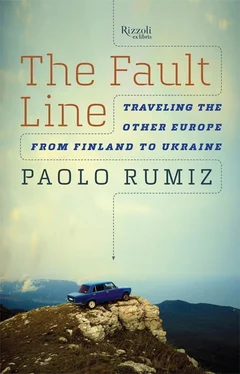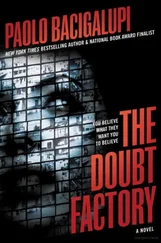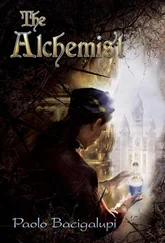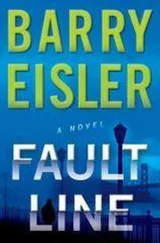The legendary city of Judaism and of Catholic Poland begins with our first Italian tourists, in front of the station, where we drop off our rental car. They are three men from Puglia, judging from their accent, obviously on the hunt for women. One is obese, one skinny as a rail, and the other incredibly nervous in what looks like a bulletproof vest. A scene from a comedy. They think they’ve arrived in the Third World, that they should be able to go to the airport by taxi for a euro and seventy cents. An enraged taxi driver explains that the closest place where they can buy something for a euro seventy is Ulan Bator, in Mongolia. They play the tough guys, bother a few more cabdrivers with their arrogant behavior, but in the end they retreat. They’re behind the eight ball. They’ve got all the cabbies against them, and they don’t know what to do. They consider taking a bus, but they don’t speak English, let alone Lithuanian. So they go back humiliated to Canossa and get in the first cab at the head of the line.
The cabdrivers in Vilnius are phenomenal. They talk loud, bicker, argue continuously, and make you feel that you’re definitely in the South. The world of the mute Finno-Ugrics is gone forever. Lithuania is the southern Italy of the Baltics. The driver who picks me up at the station is upset with himself because he can’t guess my nationality. “You are surely not Lithuanian, surely not Russian, and surely not Polish.” I keep him in suspense for a while. My Istrian-Balkan-Mitteleuropean face is tough to figure out. His, on the other hand, is unmistakably Mongol. Eyes wide apart and small, nose minimal and pug like a boxer’s, face wide like a nocturnal bird’s, cheeks enormous and bony. “I’m Italian, but a little Slav and a little German,” I tell him. And he, proudly pointing to himself: “Polish surname, Russian language, Tartar mug.” And to say “mug,” he uses the Polish word morda , disparaging, animalesque, and frankly untranslatable in Italian.
To seal his friendship with his bastard cousin from Italy with his aquiline profile, he takes his hands off the wheel and, without stopping the cab, turns around to shake my right hand vigorously. The car swerves but imperceptibly.
When I notice that he’s controlling the gear shift with his knee, I understand that I am hostage to a grandson of the Golden Horde, the band of knights from the steppe. He’s certainly one of them. Once quartered in Poland, in the time when Poland also included Lithuania and ample slices of Ukraine and Belarus, they—Muslims—put themselves in the service of the Catholic king and became the most feared defenders of the realm. It was they who brought about the overwhelming victory of Jan Sobieski against the Turks, outside the walls of Vienna, they who galloped against the Soviets in the Russo-Polish war of 1920, and they yet again who launched themselves with their swords drawn in the charge against Hitler’s panzers. That’s why my cabdriver is beating the steering wheel as though it were the halter of a horse, making it move in a terrifying manner, herky-jerky, braking on the curves, accelerating wildly, cursing, furiously denying the right of way to all comers.
Ah, Vilnius, the Vilnius of the Jews, wellspring of kabbalah and culture, how you sparkle today with fast-food chains. You’ve already become an amusement park. In just a few years, you, Athens of the Baltic, seem already to have lost much of that fascinating nineteenth-century mold that during the terrible time of the Soviets, you had somehow managed to conserve.
By now it’s dark, and tired as I am, I’m not ready to go exploring. But Monika, who as a Pole knows each of the city’s stones one by one, won’t give in. She takes aim at the hill, sniffs out some tracks on the old pavement, and thus meets Mr. Jan Pogrzelski. He’s a Greek Catholic, a member, that is, of that Orthodox confraternity that, to get out from under the repression of the Kremlin, subjected itself to the pope of Rome. A mild-mannered man, polite, well dressed and subtly possessed by his religious persuasion. He accompanies us up the hill to show us the church that once conserved the relics of a certain Saint Jouzapatas (something similar to Jehoshaphat), which were in danger of being “deported” to Moscow in the eighteenth century—and he underlines several times the term deported , as though he were talking about a living person.
Jan tells us stories of battles and massacres, and everything he says could be summarized by the single concept: “Yes, it’s possible to stay together, Westerners and Orthodox.” It’s not hard for me to sympathize. I’m a frontier Catholic who goes to Mass in the church of the Greeks on his own turf. But then comes the apocalypse. His discourse turns into a list of martyrdoms and betrayals, of sacraments denied and crypts of relics kissed for the last time by believers condemned to death. He evokes the emergence of a late Christianity erected on a base of tenacious paganism, child of the forest and the long nights of the North.
And it’s always Moscow, the East, the czar, the great Antichrist. “For Russia, I am a renegade, all of us Greek Catholics are.” And then, returning to his Jehoshaphat: “Peter the Great ordered his corpse to be burned, but the monks hid it so well that it was conserved here. And when the time of the Soviets came, Moscow again tried to appropriate itself of the relics, but the Ukrainian cardinal Slipyj succeeded in moving them to Saint Peter’s. That body was not to be left in Muscovite hands. Only when Ukraine became independent was he returned to Lviv, his hometown.”
The obsession with relics: I had heard it with this force only from the Greeks in the temple of the Holy Sepulcher. The body, the body, the heart of the problem. The body that becomes mummy and the mummy that turns into the holiest of icons. “Jehoshaphat had his head broken open with a hatchet because already in the 1600s, three centuries before Wojtyla, he wanted to champion ecumenical ideas. Then they threw his body into the river. But that body was so pure that it shone in the night and, like the body of Casimir, patron saint of Lithuania, it showed no signs of decomposition. So it was brought here, and when Peter the Great conquered the Grand Duchy of Poland and Lithuania, then celebrated the victory for three days in Vilnius, he entered this church drunk and asked whose was the body contained in the case. The monks said, it’s the body of a saint. Then Peter killed them all. In the beginning the massacre was covered up, but later the truth came out.” Night has now fallen in the city of the spirits.
“‘Vilne shtot fun gaist un tmimes, Vilne yidishlech fartracht.’ Vilnius, city of spirit and innocence, where silent prayers are murmured, soundless secrets of the night… I often see you in my dreams, my Vilnius, woods, mountains, and valleys of Vilnius, Vilnius that was the first to raise the flag of freedom…. ‘Vilnius, Vilnius, under heimshtot,’ city of our birth.” What’s left of the myth after the tabula rasa of Nazism, the nullity of Communism, and now the final storm of the market on the ruins of a glorious epoch of spirit and innocence? Maybe there is nothing left for me except this heartrending song in Yiddish that my friend Salamone Ovadia sang to me, many years ago, well before this frontier journey, which he was the very one to suggest that I take. I sing it to myself as I’m digging, exhausted, in the deep of the night after all that light in the North.
But in the midst of this darkness, Monika is searching; I can see her eyes shining like spotlights on the “soundless secrets of the night,” until Vilnius presents her with still another gift, the surprise of a rabbi, black of beard and jacket, who is coming toward her on the sidewalk. There he is, strangely responding to her greeting. I say strangely because an observant Jew, I’ve been told, is not supposed to communicate with a woman in a public place. The shade goes on its way and vanishes, but a little later there he is, reemerging from the labyrinth of the old city, and he bumps into us at the corner of a house. We introduce ourselves. The Jew is Samuel Jakob Pfeffer, he looks to be fifty or so, with wild hair. He is a rabbi who observes the rule of the gaon (genius) of Vilnius, Elijah ben Shlomo Zalman Kremer, luminary of the Talmud, who in the eighteenth century declared war on the mystics of the long curls called the Hasidim.
Читать дальше












